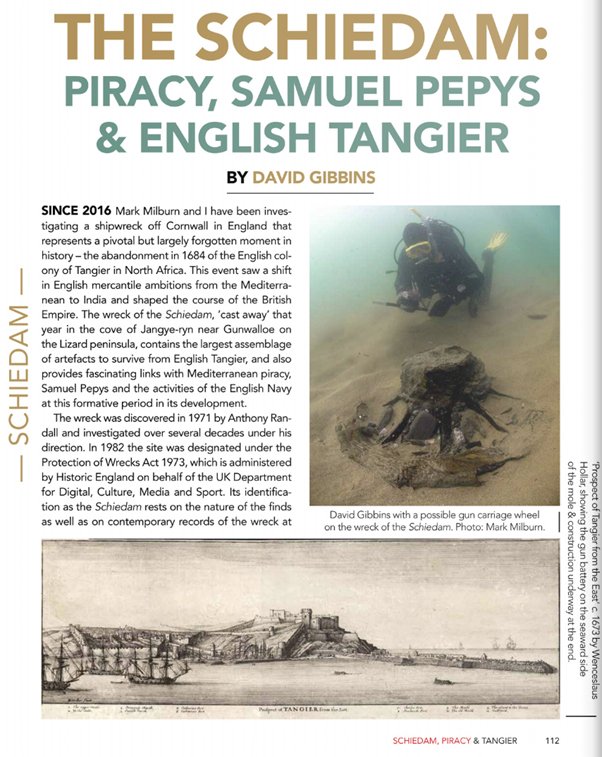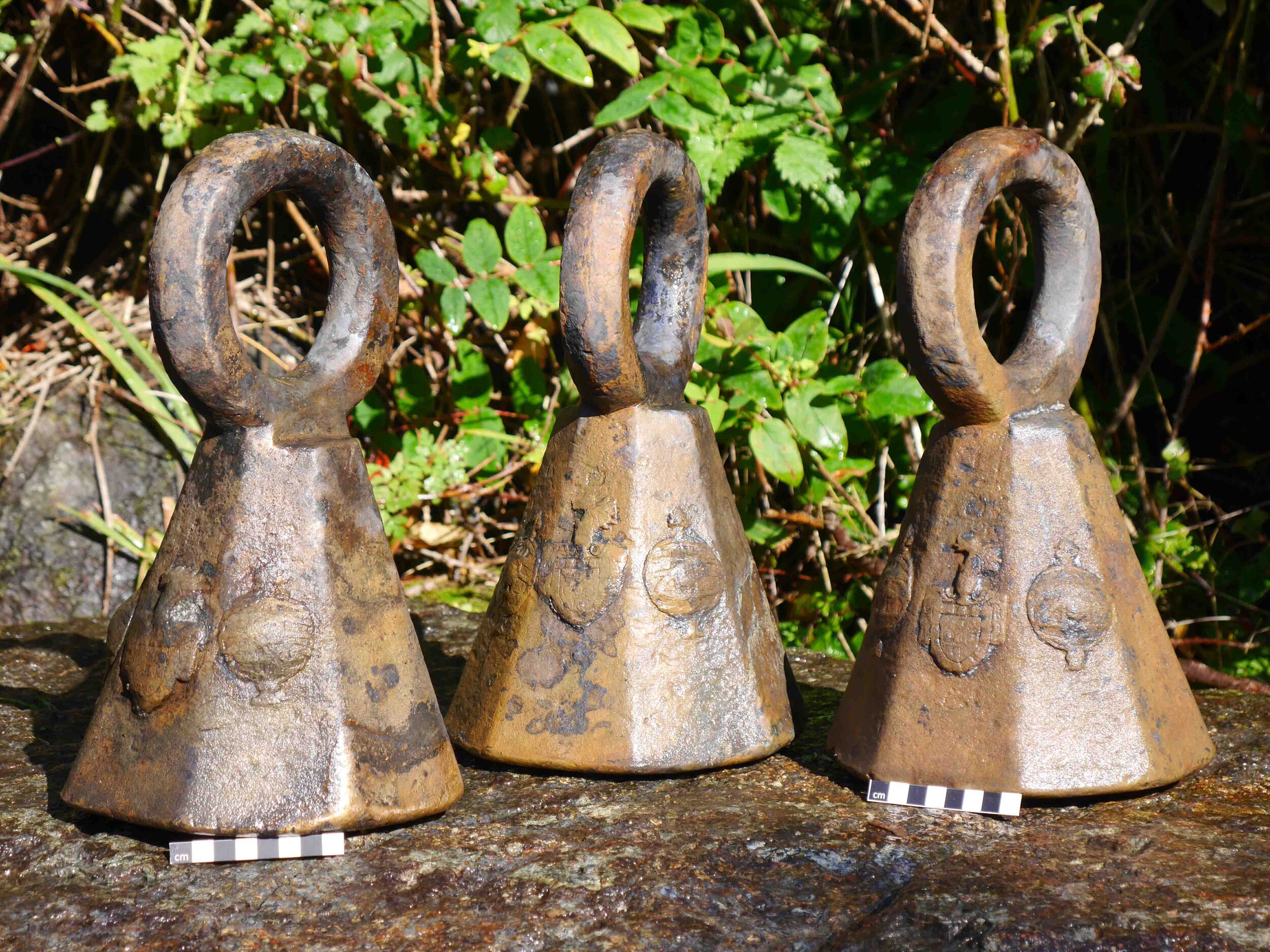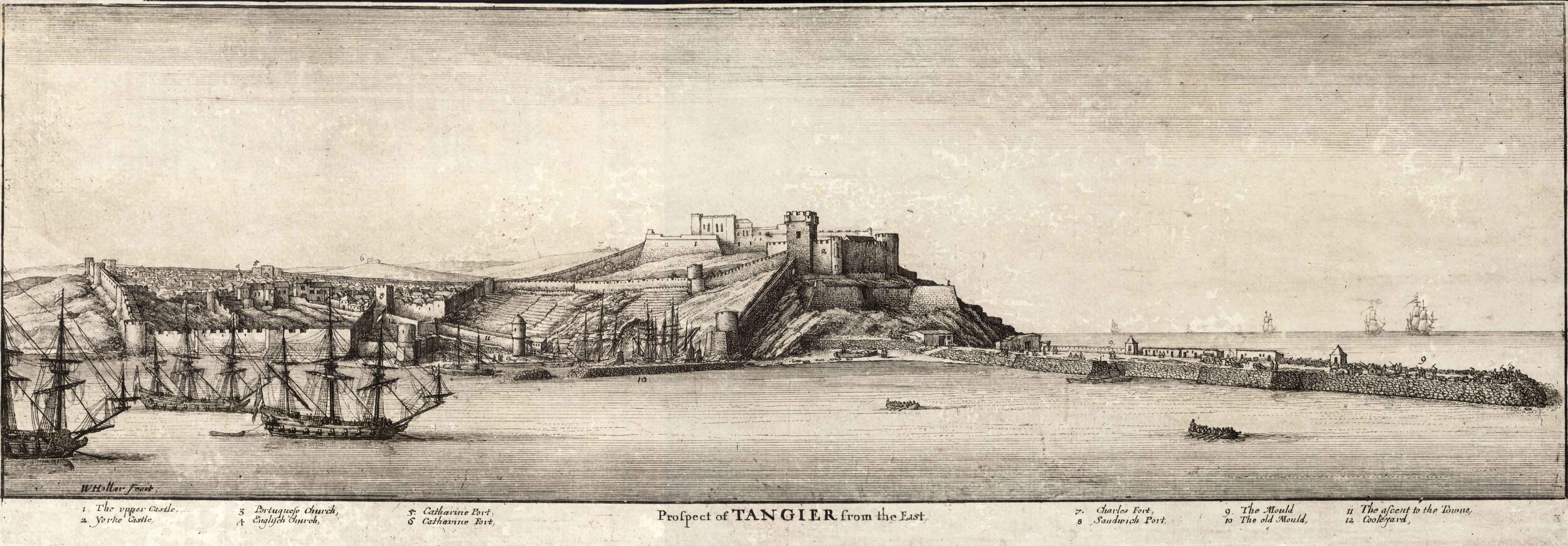The Schiedam (1684)
THE WRECK of The Schiedam (1684), Cornwall, England
The four blogs below are the result of archaeological work that I have carried out since 2016 in conjunction with Mark Milburn on the wreck of the Schiedam, off Gunwalloe on the west side of the Lizard Peninsula in Cornwall. Wrecked in a gale in 1684, the Schiedam was originally a Dutch merchantman but was captured by Barbary corsairs off Spain, recaptured by Captain Cloudesley Shovell of the Royal Navy and then used on her final voyage to transport equipment, military supplies and personnel back to England from Tangier, the former Portuguese colony that had been given to the English king Charles II as a dowry with his Portuguese wife but proved untenable because of Moorish attack and was finally abandoned by the English in 1684.
The artefacts on the wreck are unique evidence of this event - one that shaped English and world history, leading to the decision to focus on India instead of the Mediterranean - and include guns that had protected the harbour defences of Tangier. Our best finds have been three half-hundredweight merchant’s weights bearing the Portuguese Coat of Arms and dating to about AD 1500, among the most important artefacts to have been found from the Portuguese Age of Discovery. Over more than 70 dives on the site since I rediscovered it in 2016 we have been able to take extensive still and video images, some of which are shown below (click on the photos to enlarge). The site is usually deeply buried in sand - it lies only 6 metres deep and is close inshore - so these images represent rare occasions when storms have revealed the wreck.
The Schiedam is a designated wreck under the UK Protection of Wrecks Act 1973, and Mark and I are Licensees allowed to dive on the site. The weights and other artefacts seen here were all reported to the UK Receiver of Wreck and are destined for museum display once they have been conserved and fully published.
The wreck of the Schiedam also features in my novel Inquisition - to read about that click here.
Article in the Daily Telegraph on 20 November 2020





















